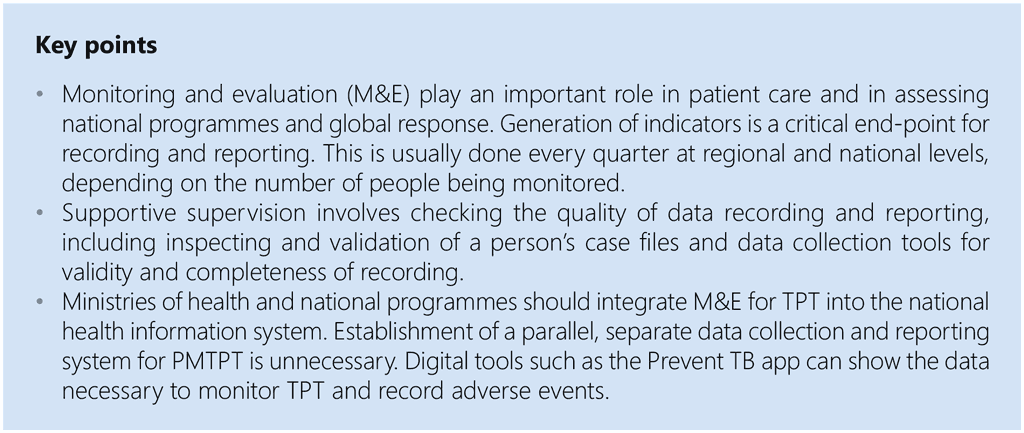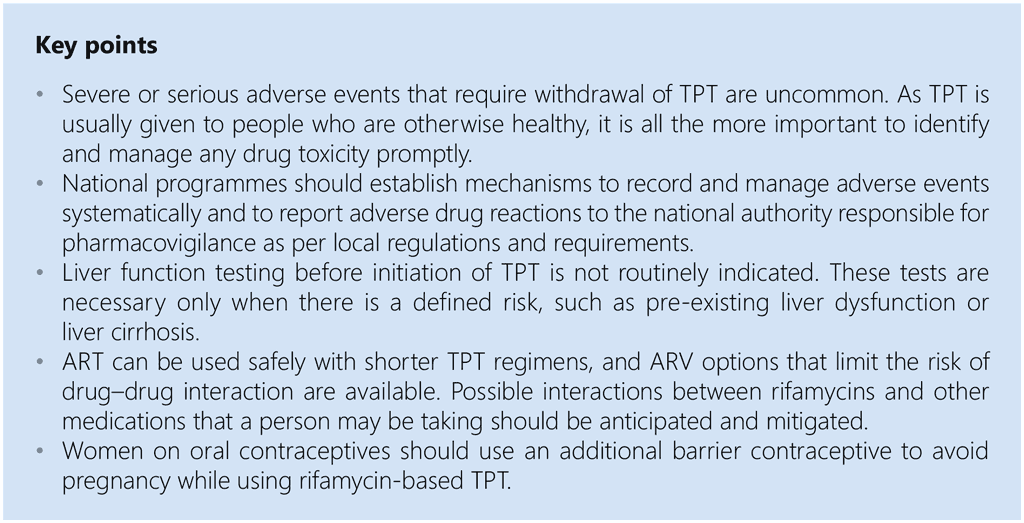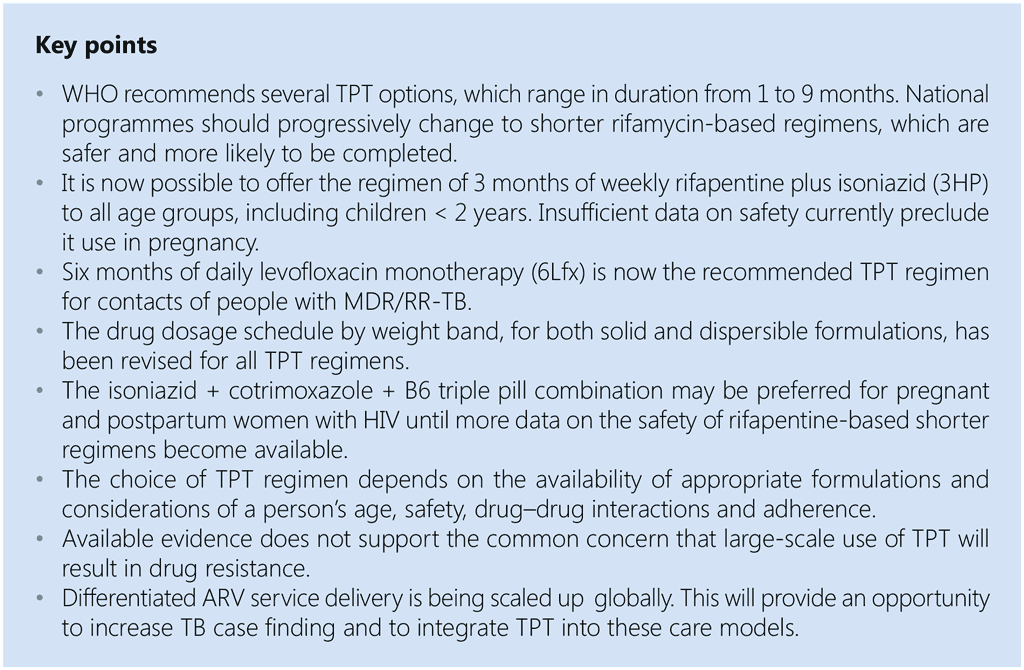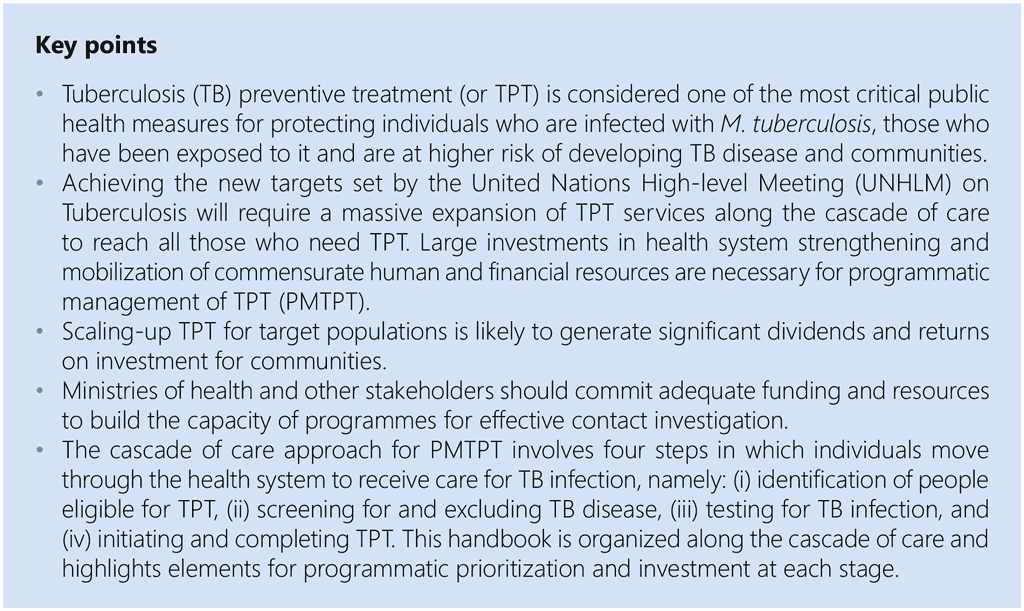8. Monitoring and evaluation


8.1 The role of M&E
M&E play important roles in patient care and in assessing national programmes and the global response (Fig. 11).
 TB KaSPar
TB KaSPar
 Feedback
Feedback


M&E play important roles in patient care and in assessing national programmes and the global response (Fig. 11).


WHO has long recommended use of TPT for populations at risk of TB, particularly those with HIV and child household contacts of TB patients.


The fourth step in the cascade of care for PMTPT is the choice of TPT regimen and providing support to people on TPT in completing their treatment.


About one fourth of the world’s population is estimated to have been infected with M. tuberculosis (1,2).
TPT falls broadly into three categories: (i) isoniazid monotherapy for 6 or 9 months (6H or 9H), (ii) rifamycin-based shorter treatment and (iii) Lfx for 6 months (6Lfx) for people exposed to MDR/ RR-TB. Isoniazid preventive treatment (IPT) for 6 months was the mainstay of TPT until recently, for both adults and children, HIV-positive and HIV-negative, and in high and low TB incidence countries. Several systematic reviews have consistently demonstrated the efficacy of IPT in preventing TB disease among people infected with M. tuberculosis.
Class I BSCs work by drawing unfiltered room air in through a front opening, passing it over the work surface, and then expelling it through an exhaust duct.
Class I BSCs protect workers but do not protect work products (such as specimens or cultures) against contamination because unsterilized room air is drawn over the work surface.
To address specific potential risks, the following biosafety requirements¹⁴ ¹⁵ should be established in a low-risk TB laboratory.
1. Use of bench spaces: The bench used to process specimens for direct sputum-smear microscopy or the Xpert MTB/RIF assay should be separate from areas used to receive specimens and from administrative areas used for paperwork and telephones.